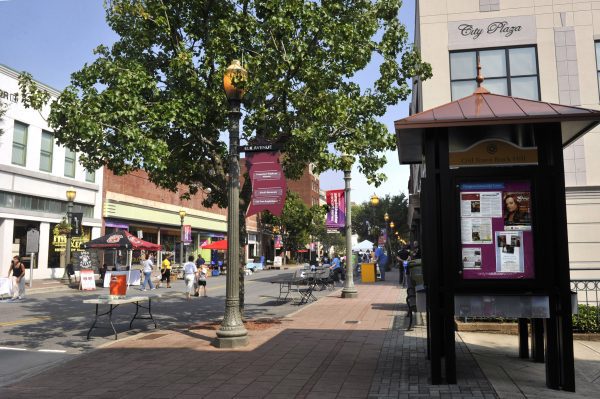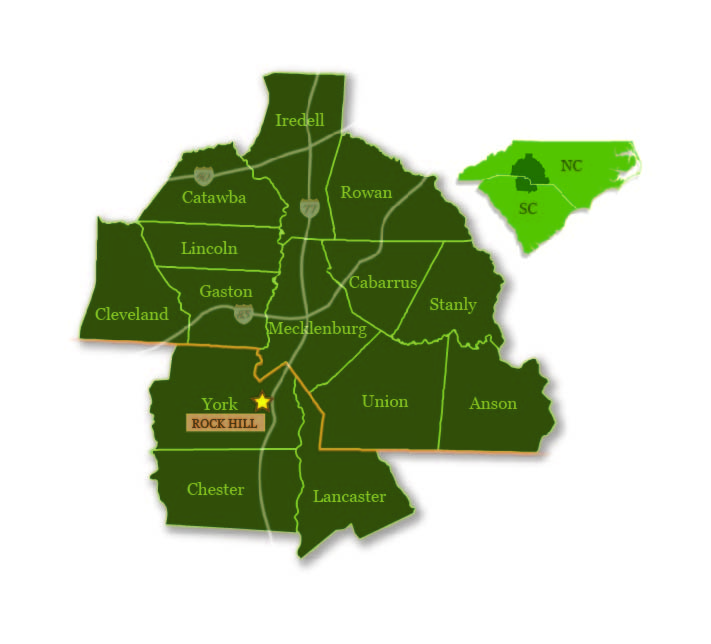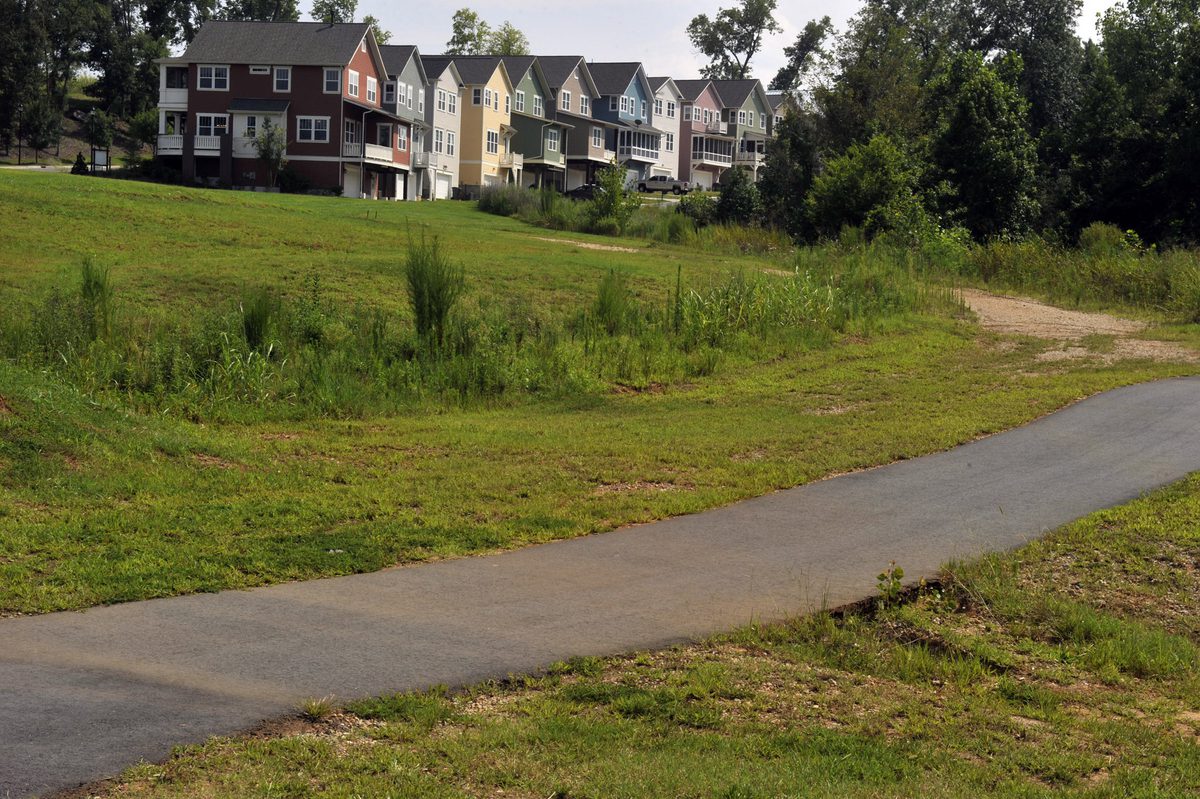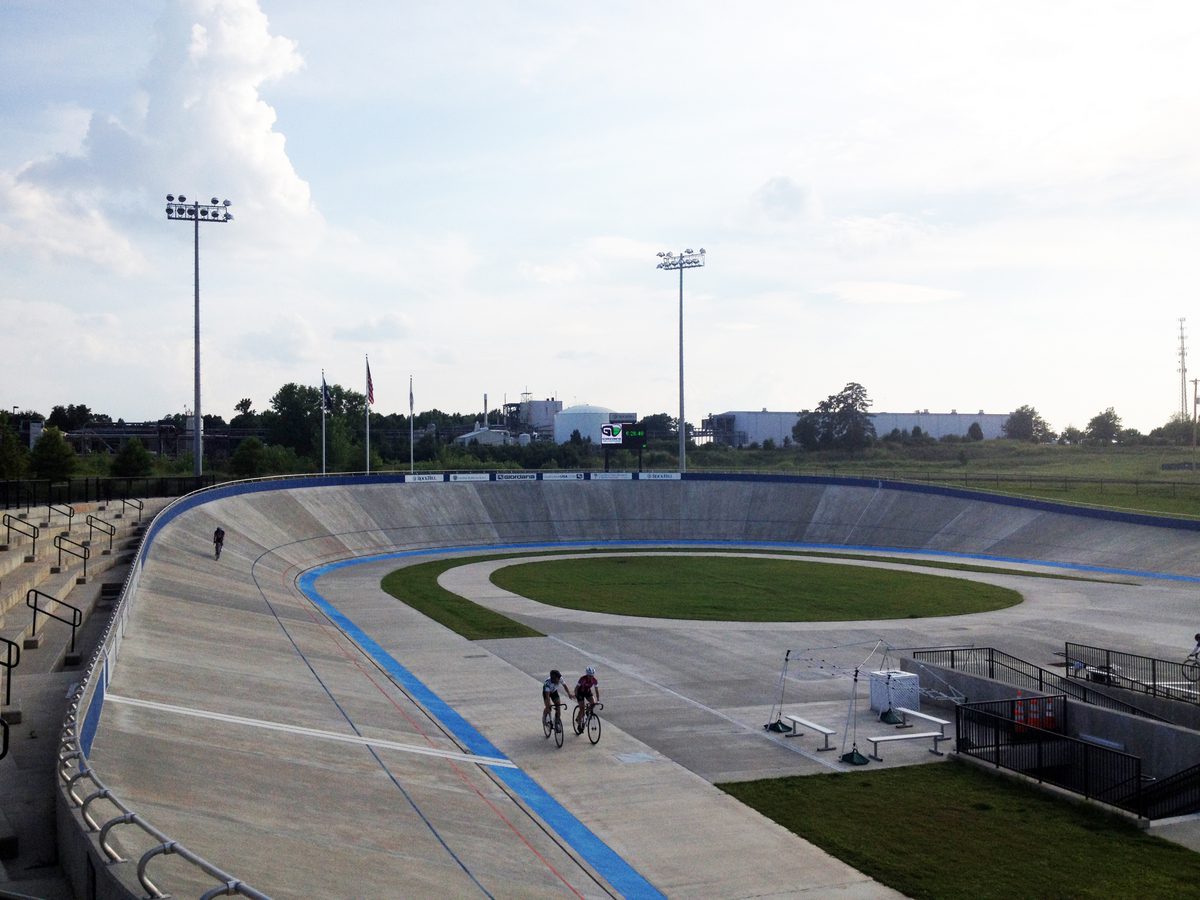Talk of the Towns: Rock Hill

Talk of the Towns is a PlanCharlotte series visiting planners from the 14-county Charlotte region. This installment takes us to Rock Hill in York County, S.C.
The former industrial town of about 68,000 people is searching for a new image. Bill Meyer has been planning and development director in Rock Hill since 2006. He talked about the new Riverwalk mixed-use development, downtown revitalization and the city’s comprehensive planning process.
Are you expecting growth, or trying to attract it? 
Bill Meyer: Our growth had leveled off because the recession flattened things out. You probably had a higher vacancy rate in rental housing. But now we’re seeing our rental housing fill back up because the economy is bouncing back. This is still an area that is going to get a lot of growth. I think the challenge for most communities is to grow on the community’s term rather than those of external forces.
How is Rock Hill growing on “on the community’s terms”?
Bill Meyer: The city did a major rewrite of its zoning ordinance about nine years ago. A strong part of that was raising the bar on single-family development. We wanted to make sure we strike a good balance of having high standards but also having reasonable regulations that can work in the marketplace.
It’s a different world now than five years ago. Everyone is operating in a much more conservative manner. The community has specific goals for how it wants to grow, and a developer comes in and says ‘I need some help because I can’t quite meet every single standard and still make it work financially.’ Some times in the past, cynical folks would say that’s just a developer trying to talk you into something and we always have to be on guard for that. But we’re plugged in enough to their world to know what they’re up against.
How important is development in the traditional downtown?
|
Read more Talk of the Town interviews |
Rebuilding the urban core is so important that it’s pretty much the whole mission for our economic and urban development department here. We have our Knowledge Park initiative[a plan to attract a cluster of high-tech firms to a former textile mill district], basically focused on the area between Winthrop University and the main downtown area, and the old textile mills that have been redeveloped or torn down there. We’re trying to get mixed use in there and knowledge workers to build off the university and the amenities we have in the center city.
What are some downtown development projects?
Meyer: The city is involved in taking a block of what used to be a giant parking lot and turning it into a park called Fountain Park. There was a significant donation from Comporium [cable company formerly Rock Hill Telephone]. The park will be bracketed by Comporium’s new building and its existing headquarters.
Does Rock Hill have any environmental success stories or face any environmental challenges?
Meyer: A lot of development projects are on brownfield sites. The Bleachery [a partially demolished textile mill] is the center of the Knowledge Park project. Riverwalk [a new mixed-used development] where the former Celanese plant was is a brownfield site.
 The city is a partner in Riverwalk by providing things like TIFs [Tax Increment Financing] and improvement district bonds.
The city is a partner in Riverwalk by providing things like TIFs [Tax Increment Financing] and improvement district bonds.
The city has also invested money on the sports venues out there and the trail along the river. The Velodrome [a banked bicycle track] and the BMX track are important, too. A crucial component of our economic development is sports tourism. That brings $15 million to $20 million in economic impact each year.
What planning strategy are you most proud of?
Meyer: I have always been an advocate of incrementalism. A lot of planners take swings for the fences. Every once in a while you hit one out; more often than not, you strike out. One of our biggest challenges has been to take a city that was known as a difficult place to do business and turn that around, which I think we’ve effectively done. As planners, we try to set a vision that encompasses a majority opinion on the direction of the community.
What does that vision include?
Meyer: Long-range planning is something we’re reinvigorating. We’re trying to figure out how you make that relevant to folks. Our challenge is to take that phonebook-sized plan and distill it down to the most important concepts. The three important concepts are: connectivity, grow inside first, and build better neighborhoods.
Connectivity, which involves “complete streets,” is part of it. We build all these venues to attract cyclists from around the country and we just laid down our first bike paths and bike routes officially in the city within the last year. We put elements of “complete streets” [developing streets for pedestrians and cyclists as well as drivers] in our ordinance and reduced pavement widths in some cases. You go out to Riverwalk, for example, and you’ll see bike lanes and sidewalks and on-street parking. The challenge of any city that has seen a lot of suburban-style growth is you can’t go retrofit that stuff overnight. In a lot of cases there isn’t even room to retrofit. So how do you retrofit what you can and then build anything new to that kind of standard? We’re also focused on building better neighborhoods. This is very much a community of neighborhoods. But we’ve gotten away from that as a society. For most of the last 50 to 60 years, the definition of neighborhood was some bushes and a sign at the front entrance of a subdivision. One of the efforts is to look at ways to knit commercial areas back into the neighborhood. I live in a subdivision where I’m close enough to be awakened at 4 a.m. by the garbage trucks emptying out the dumpsters at the adjoining shopping center. But I can’t walk to Harris Teeter to buy a quart of milk without taking my life in my own hands because there are no sidewalks. That’s a raw deal. If they’re going to wake me up, at least let me walk there.
What are your biggest challenges or disappointments as a planner?
Meyer: Occasionally, you Monday morning-quarterback yourself and think I was a little too conservative, a little too careful and in retrospect there was an opportunity to push myself a little bit further. I still choose to go the incremental route. Overall you’re better off to consistently win and gain people’s confidence.
We became a little more flexible during the very bottom of the recession. You sometimes ask, “If those same people were coming back in here today, would we have pushed them a little harder to do a little better?” Well, yeah. But could we have gotten away with that back in 2009 or 2010? Probably not. You’re left to ask if it was better to have the development come as opposed to scaring them away.
What is the next big thing in Rock Hill?
Meyer: Building on our initiatives in the city core and the Knowledge Park area to bring people to live downtown and to experience mixed-use development. Conversely, out at Riverwalk, I think that Rock Hill goes on the map as a place for people to live who are looking for the urban walkable experience. There are only a few places in the metro area that can offer that and I really think we are on the cusp of having some very attractive locations that will fit that description.
Not everyone wants to come back and live in downtown. There will still be people raising families with a back yard in suburbia. But the demographic changes will at least balance things.
